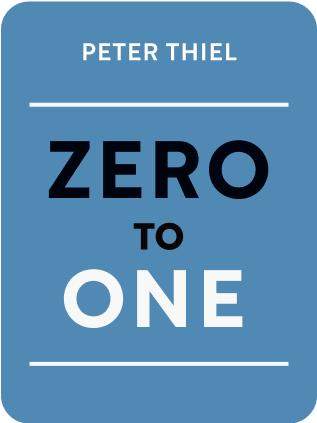

This article is an excerpt from the Shortform summary of "Zero To One" by Peter Thiel. Shortform has the world's best summaries of books you should be reading.
Like this article? Sign up for a free trial here .
Are you looking for information on building a startup? What are the steps that you should take to create a startup?
Building a startup is no easy task. While you may have a game-changing idea, there are many factors to consider when building a startup. Peter Thiel, founder of PayPal, offers advice for a strong startup foundation.
Building a Startup With a Strong Foundation
While all startups are different, every startup needs to get certain things right at the outset because it’s impossible to fix them later. Put another way, “Thiel’s Law” states that a startup with a flawed foundation can’t be repaired. That’s why building a startup needs to be a careful process.
Whether you’re building a business, a house, or a country, what you do at the beginning determines how well your creation will hold up in the future. America’s founders spent months at the Constitutional Convention debating fundamental questions of how government should be structured—for instance, how congressional representation should be set up.
Since then, structural changes have been difficult and rare. Since the first 10 amendments (the Bill of Rights) were ratified 1791, the Constitution has been amended just 17 times. While the system of apportioning congressional seats is problematic today—for instance, California has the same representation as Alaska although its population is much greater—change is unlikely.
Similarly, what you do when creating a tech startup can be difficult to change later if it turns out to be wrong—for instance, picking the wrong co-founders or directors can be hard to correct except possibly in a crisis scenario like bankruptcy. A great company requires a strong foundation.
Choosing Partners
The most critical question in starting a business is choosing partners or co-founders. As in marriage, if you choose the wrong person, breaking up can be ugly. Choosing your partners is one of the most important parts of building a startup.
Of course, no one wants to think at the start of a relationship about what can go wrong—people want to be optimistic. But if the founders develop unresolvable differences, the company will be at risk.
Here’s an example. Thiel’s PayPal colleague Luke Nosek co-founded a company in which Thiel invested. The two co-founders were opposite personality types; they’d met at a networking event and without getting to know each other, decided to start a company. This would be like marrying someone you met while playing the slots in Las Vegas—the odds are against it working out. The company failed and Thiel lost his money.
When creating a tech startup, it’s important to choose leaders who have the right technical knowledge and whose skills are complementary. Equally important, however, is how well the founders know each other and work together.
Three Key Decisions in Building a Startup
Besides the founders, everyone in a startup needs to be able to work well together.
People sometimes claim that a lack of structure liberates employees from old rules that inhibit new ideas. But you have to have structure because people don’t naturally work together without it—they fight or go in different directions. Building a startup means considering every factor.
You need to hire people who can get along with each other and who have the right skills, but you also need a structure and clearly defined roles so everyone is aligned to move the organization forward.
For effective alignment, you must make three decisions:
- Ownership: Who will own the company’s equity. Ownership is typically divided among founders, employees, and investors.
- Possession: Who will run the company day-to-day. It may be a founder/CEO or manager and employees.
- Control: Who will govern the company. A board of directors (usually consisting of founders and investors) maintains control.
The way it works, in theory, is: investors and employees are motivated by the financial rewards,
founders and employees are motivated by the responsibility of running the company, and directors’ experience keeps the company on track.
However, people can act out of line with the company’s mission and impede its functioning. For example, the inefficiency and rudeness that characterize some government agencies like departments of motor vehicles reflect misalignment. While the governor, legislature, and department director may want to provide good service, frontline employees may not care. Good service won’t happen until everyone is on the same page.
Big corporations are better, but still prone to misalignment especially between directors and the executive handling day-to-day operations. The executive may focus on short-term results rather than creating more long-term value for shareholders by strengthening the company for the future.
In building a startup, most conflicts occur between founders and investors on the board (between ownership and control). For instance, a board member who’s an investor might want the company to go public as soon as possible to benefit his venture fund, while the founders want to continue building the business as a private entity.
Keeping the board small can make it easier to communicate, provide oversight, and maintain consensus. Three to five members is the ideal size. Large boards are unwieldy and ineffective. Nonprofits often have dozens of board members who are so unfocused they can’t provide any meaningful oversight. This may leave too much power in the hands of a dictatorial executive, and gets in the way of creating a tech startup.
Employees and Consultants
Because they often have limited resources, startups may be tempted to use consultants and part-time and remote employees, which cost less than full-time employees. But this works against building a cohesive team and is a recipe for misalignment in building a tech startup.
Everyone involved in your company, except possibly lawyers and accountants, should be working on it full time. Anyone, including consultants, who isn’t getting a regular salary or stock options is misaligned. People who are only peripherally involved are predisposed toward short-term rewards rather than helping to build long-term value.
Also, misalignment can occur whenever people aren’t working full time at one location. Employees can stay on the same page only by working together every day.
Compensation
Paying a CEO too much can be demotivating for everyone, while paying the CEO comparatively little can have the opposite effect. Building a tech startup requires that you think of this.
A CEO of a venture-funded startup shouldn’t be paid more than $150,000 a year. High pay (more than $300,000) encourages her to protect her salary by defending the status quo and minimizing problems rather than exposing and fixing them.
Other advantages of low CEO pay:
- It encourages the executive to focus on increasing the value of the company.
- It motivates employees to work harder. By working for lower pay, an executive demonstrates her commitment to the company and its mission. Employees will follow her example.
By the same token, over-paying employees encourages them to focus on what the company is doing in the present instead of thinking about how to increase the company’s value in the future. Cash bonuses also encourage short-term thinking.
While cash compensation focuses on the present, offering equity or part ownership of the company shifts the focus to the future and also keeps everyone aligned.
However, allocating it in a way that avoids conflict isn’t easy, and isn’t always the best way of building a tech startup. Giving everyone equal shares would be unfair because talents and responsibilities differ. The earliest employees often get more equity because they’ve taken greater risk—however, some later hires may merit more equity because they’re important to the company’s success. Since granting different amounts can seem arbitrary, it’s best to keep allocations confidential.
Building a startup takes time and careful planning. You’ll need more than just a great idea or product, and this guide can help you get there.

———End of Preview———
Like what you just read? Read the rest of the world's best summary of Peter Thiel's "Zero To One" at Shortform .
Here's what you'll find in our full Zero To One summary :
- Why some companies genuinely move the world forward when most don't
- How to build a company that becomes a monopoly (and why monopolies aren't bad)
- Silicon Valley secrets to selling products and building rockstar teams






